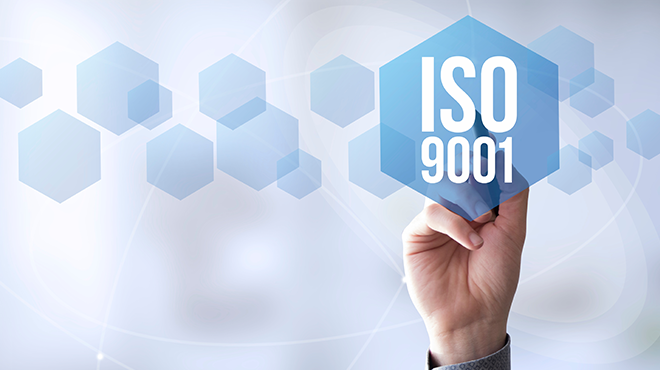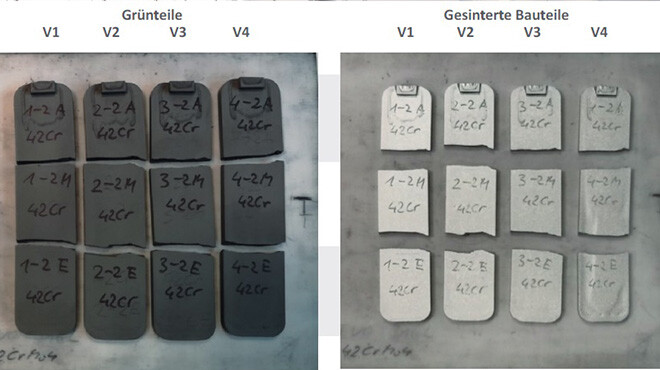The Archimedes' principle in manufacturing
What awaits you here: Introduction: Archimedes' principle and its significance in manufacturing What is Archimedes' principle? The traditional...

ISO 9000 and 9001 represent the essence of what quality management means in the modern business world. These standards form the foundation on which companies build their quality management systems (QMS) to ensure that their products and services consistently fulfil their customers' expectations.
ISO 9000 serves as a guideline for the basic principles of quality management and defines relevant terms. It focuses on customer-orientation, a process-oriented approach, continuous improvement, as well as fact-based decision-making and mutually beneficial supplier relationships.
ISO 9001, on the other hand, is the standard that defines the requirements for setting up a QMS. It emphasises the importance of processes and their continuous monitoring and improvement. The role of measuring equipment is particularly emphasised here, as it is crucial for monitoring and ensuring the quality of products and services.
Measurement resources are an indispensable tool in the context of quality management, especially in the context of ISO 9001. Chapter 7 of ISO 9001 places particular emphasis on ‘support’, with a focus on resources for monitoring and measurement. These resources are critical to ensuring that products and services meet the specified quality standards. In addition, ISO 9001 specifies that ‘organisations’ must have appropriate processes in place to ensure this standard. Measuring equipment plays a key role here, as it enables an objective assessment of quality. They are not only used for inspection, but also for the continuous improvement of processes and products.
In this context, the traceability of the results is crucial for a successful QMS. Comprehensive documentation of the test process, environmental parameters and measurement data is essential for this. The more precisely a result is documented, the better conclusions can be drawn about the production process. In this context, automated systems with integrated sensors that support complete data evaluation and storage take centre stage in modern industry.
Another important point that is anchored in ISO 9001 is the regular calibration of measuring equipment. This serves to verify the results. The measuring equipment must be traceably calibrated to a recognised standard at defined intervals.
The original calibration to a generally recognised standard is currently a challenge in density determination. With Dimensionics Density, this issue has been addressed. The system uses an independent and certified density standard, which represents great added value for companies that organise their processes in accordance with ISO 9001. As the handling of the measuring equipment complies with the guidelines, reliable statements can be made about measured values and the production process itself.
The automation of the testing process and the complex recording of all relevant environmental parameters ensures complete documentation of the density determination and offers the operator greater transparency, thereby guaranteeing a more effective QMS.
ISO 9000 and 9001 are undoubtedly central pillars of modern quality management. They not only provide structured guidance for organisations to develop and implement their quality management systems, but also lay the foundation for consistent and high quality product and service delivery. The emphasis on customer-orientation, the process-oriented approach and continuous improvement in these standards reflects the dynamics and demands of today's business world.
The outstanding importance of measuring equipment emphasises the need for objective, traceable and precise quality assessment. Dimensionics Density, as an example of modern measuring systems, impressively demonstrates how technological innovations and standards can work together to optimise quality assurance.
Regular calibration of measuring equipment and traceability to recognised standards are crucial to ensure the integrity and reliability of measurement data. This is particularly important in areas such as density determination, where precision and accuracy are of central importance.
Overall, the discussion around ISO 9000 and 9001 and the role of measuring equipment in quality management illustrates the ongoing evolution and adaptation of quality standards to the ever-changing demands of industry. It is a testament to how standards and technology go hand in hand to ensure excellence in production and service delivery.

What awaits you here: Introduction: Archimedes' principle and its significance in manufacturing What is Archimedes' principle? The traditional...

Additive manufacturing has established itself as a transformative technology in the manufacturing industry. A crucial aspect for the quality and...

What awaits you here: INTRODUCTION TEST SETUP AND IMPLEMENTATION RESULTS OF DENSITY MEASUREMENT OPTIMISATION OF PRODUCTION PARAMETERS CONCLUSION AND...